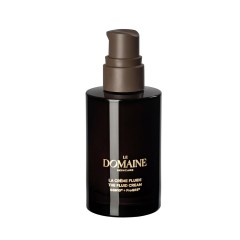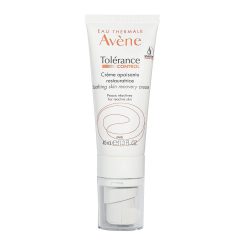BestReviews is reader-supported and may earn an affiliate commission. Details

This anti-aging face cream is great for combination skin types.
The formula isn’t sticky like some creams can be and it’s quickly absorbed through the skin. Clinical tests have shown it can reduce eye bags, signs of fatigue, and wrinkles. It uses two patented ingredients that slow aging skin and provide antioxidants.
It's very expensive compared to other options on our list.

A much-loved formula known for its lightweight finish and ability to achieve big results.
Delivers up to 8 hours of moisture and hydration. Oil-free formula won't clog pores and can be used by those with oily or acne-prone skin. Helps build up the skin's natural moisture barrier over time.
Some users claim it might not be moisturizing enough for use in winter weather.

This is a hydrating face cream that's made with quality natural ingredients.
Highly moisturizing cream that's formulated with 12 "superfood" plant-based ingredients that nourish dry skin. Packed with vitamins A, B, C, and E. Cruelty-free and made without chemicals, toxins, fillers, or artificial fragrances.
A few repeat customers complain that the formula has changed, and they prefer the previous one.

An award-winning, luxurious, and lightweight moisturizer packed with nutrients to pamper your skin.
Contains antioxidant-rich superfoods, essential phytonutrients, and vitamins C, E, and K. Helps fight free radicals and replenish and support the skin barrier. Ideal for combination and oily skin. Free of harmful ingredients.
Didn’t feel hydrating enough for some users with dry skin.

A rich face cream suitable for hypersensitive and dry skin.
Formulated with citric acid and postbiotics to calm redness and irritation in the skin. Even those with the most sensitive skin can find relief from this moisturizer. Free of preservatives and fragrances. Suitable for use in the morning and at night.
It may need to be paired with a deeper moisturizer for very dry skin.

After going through an intensive research process to narrow down our short list of top products in this space, we tested Tatcha Water Cream to be sure that it’s worthy of our recommendation. Guided by experts, we spend hours looking into the factors that matter and test to verify manufacturer claims.

Healthy skin has plenty of natural hydration to keep it firm, soft, and glowing. Unfortunately, the environment – and often your lifestyle – tends to conspire against your skin’s good looks in the form of air pollution, sun exposure, cigarette smoke, harsh facial cleansers, and poor diet, to name just a few. Luckily, you can rescue your skin with a face moisturizer.
The application of a good face moisturizer is one of the most important steps in your skincare routine. Choosing that moisturizer, however, can be an exercise in frustration. After all, there are entire shelves of moisturizers in beauty supply shops, all promising to work magic on your skin. So how do you separate the hype from the reality?
If you’re in a hurry to treat your skin right, we've included our recommendations for great face moisturizers. We've also provided more information about face moisturizers in general, including how to choose and use them.

All moisturizers help restore healthy moisture to your skin, but there are quite a few different formulations. Here, from the lightest to the heaviest, are the most common types of face moisturizers.
A facial spray isn’t intended to be your only moisturizer, but these water-based products work well to add a bit of moisture to your skin throughout the day.
Some are oil based, some are water based, some have a base of silicone, but what all serums share in common is that they are lightweight products that add some moisture, along with other benefits, to your complexion.
These light, water-based moisturizers are good for use on oily or combination skin.
These lightweight moisturizers are particularly good for oily or combination skin because they absorb quickly and aren’t heavy or greasy.
Probably the most popular type of moisturizer, creams are thicker than lotions but still absorb fairly well. There are many formulations, so you can find a cream moisturizer no matter what type of skin you have, but these are generally best for dry complexions.
These heavy moisturizers are thicker – and they can sometimes feel a bit greasy on the skin – but they add a powerful dose of moisture to even the driest of complexions. They are also good for aging skin.
Dry skin tends to feel tight and itchy, shows fine lines sooner than other skin types, sometimes looks dull or ashy, and can have flaky patches. Bring your dry skin back to life with a lotion or cream moisturizer loaded with coconut oil, shea butter, lanolin, ceramides, lactic acid, urea, lanolin, dimethicone, glycerin, or jojoba oil.
Normal skin is balanced. It isn’t too dry and tight or excessively oily and shiny, other than a bit of shine in the T-zone. If you’re lucky enough to have this skin type, keep it looking its best with a serum, lotion, gel, or cream that has a light texture and skin-pampering ingredients like hyaluronic acid, plant oils, or silicones.
Even oily skin can benefit from a little extra moisture, but stick with lightweight formulas, such as lotions, gels, or serums, to prevent excessive shine, clogged pores, or breakouts. Choose products that are free of oils but include hyaluronic acid or glycerin, along with plant-based ingredients like aloe vera, to keep your skin smooth, healthy, and dewy.
Sensitive skin tends to become red, inflamed, or flaky when exposed to irritating ingredients. The best way to keep your sensitive skin happy is with a face moisturizer that doesn’t contain fragrance, retinol, alpha hydroxy acids, or alcohol. Look for coenzyme Q10, vitamin E, aloe vera, or other gentle ingredients.

While there are hundreds of ingredients commonly used in face moisturizers, they generally fall into three broad categories.
Most moisturizers contain a combination of all three types of ingredients, as well as other skin soothers, such as herbal infusions, minerals, vitamins, and skin softeners.
Emollients fill in the gaps between skin cells, soothing itchy and flaky skin. Common emollients include lanolin, petroleum, and mineral oil.
Occlusives form a barrier on the outermost layer of your skin, preventing moisture from evaporating out of your cells. These are thick and heavy ingredients, such as silicone, beeswax, paraffin, and heavy oils.
Humectants draw moisture from the air and into your skin cells. Hyaluronic acid, glycerin, lactic acid, urea, and alpha hydroxy acid are common humectants.
As with most cosmetic and skincare products, you’ll find a huge price range when shopping for face moisturizers. Expect to pay from less than $10 to more than $50, depending on the formulation and brand.
For less than $10, you can find many drugstore formulations that don’t have fancy ingredients but get the job done. Be aware, however, that you’re likelier to find irritating or breakout-inducing ingredients in some of these products.
You’ll find the widest range of popular drugstore face moisturizers between $10 and $25. You can expect good-quality ingredients, formulations that help – not irritate – your skin, and products geared to various skin types.
You’ll find a wide range of quality brands that cost between $25 and $50 sold at cosmetic counters and shops. These products often have unusual or cutting-edge ingredients, but you are also paying for marketing hype in this bracket.
You’ll find premium face moisturizers that cost $50 and more. These brands generally include the highest-quality ingredients, but you’re also paying for the brand name and celebrity endorsements.

While applying moisturizer isn’t complicated, these tips will help you get the most from your product.
Always wash your hands before applying any skincare product.
Make sure your face is freshly washed and just a little bit damp before applying your moisturizer. (If you use a toner, apply it before moisturizing.)
Don’t go overboard. You only need a pea-size to quarter-size dab of moisturizer to cover your face.
Start at the center of your forehead, and gently stroke the moisturizer toward your temples, and down and around your eyes.
Use circular motions to smooth the moisturizer over your cheeks, and then tap it along your nose, upper lip, and chin. Don’t forget to apply product to your neck, too.
Let the moisturizer absorb for a minute or two before applying sunscreen or foundation.
If you layer several skincare products, apply serum first, then moisturizer, and then sunscreen.
If you’re concerned about fine lines or wrinkles, choose a face moisturizer with anti-aging ingredients like retinol, collagen, and vitamin C.

A. As a general rule, apply products in order of “heaviness” or thickness, leaving sunscreen for last. After washing your face (and applying toner, if desired), apply a lightweight serum, a thicker moisturizer, and, finally, a sunscreen if there isn’t one already included in your moisturizer or foundation.
A. Redness, burning, or stinging, blotches or hot patches, and even raised bumps are usually a sign of sensitivity or allergy to an ingredient in your moisturizer. Fragrance is the most common culprit, but some people are also sensitive to antioxidants, alcohol, artificial colors, or any other strong ingredient. Look for a moisturizer specifically formulated for sensitive skin to avoid common irritants.
A. While you’ll find premium ingredients in many of the very expensive or highest-end skincare brands, you’ll also find many of the same ingredients used in less expensive drugstore products. Don’t assume that you have to pay a lot of money for a good face moisturizer. There are many fine products that cost less than $20.
A. Absolutely! You’ll find many all-natural face moisturizers, including vegan formulations. These products often use aloe vera as a base and have various herbal ingredients and plant oils to add moisturizing power. One example that we considered in our review is the Natural Face Cream Moisturizer from Eraorganics.
Get emails you’ll love.
Learn about the products you’re wondering if you should buy and get advice on using your latest purchases.
